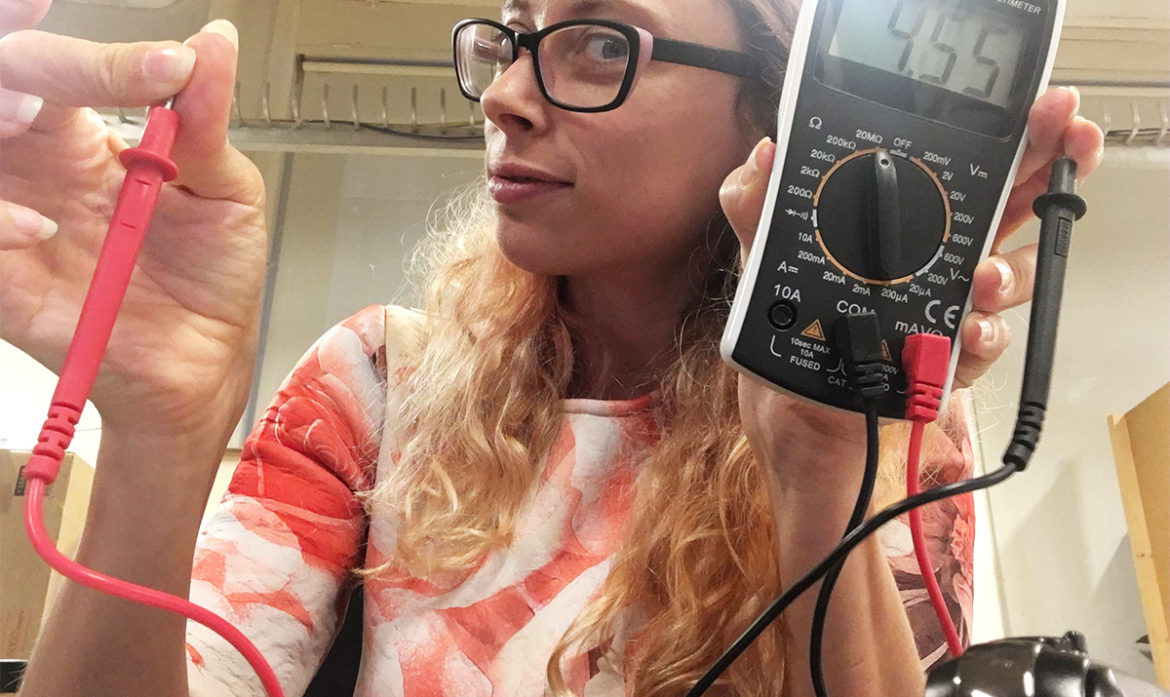Intro to Physical Computing: Lab 1
Following the advice from my elders to necessarily buy my own equipment and absolutely to not buy anything because the lab or somebody has it, I got only a basic toolset. It contained a mini breadboard, some resistors, wires, basic switches and a Metro – Arduino’s least expensive knock-off cousin. The most expensive piece was the multimeter. A first conductivity test on myself revealed to me I’m a 4.5 MΩ.
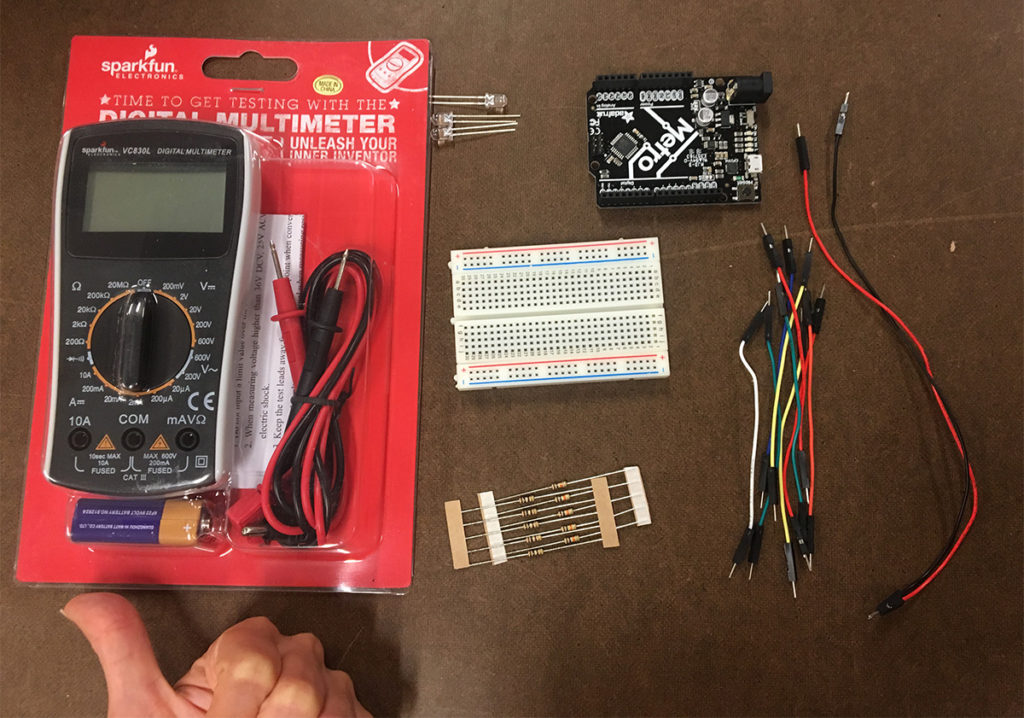
My first circuit
Eager to begin, I was looking for the simplest way to close my first electric circuit – just to see if it works. Instead of connecting my circuit to the grid using a DC (direct current) adapter like the professor advised, I connected it to the Metro microcontroller, using it’s 5 Volt outlet like the guy from the workshop advised.

After a short of trial and error wiring, the LED lit up.
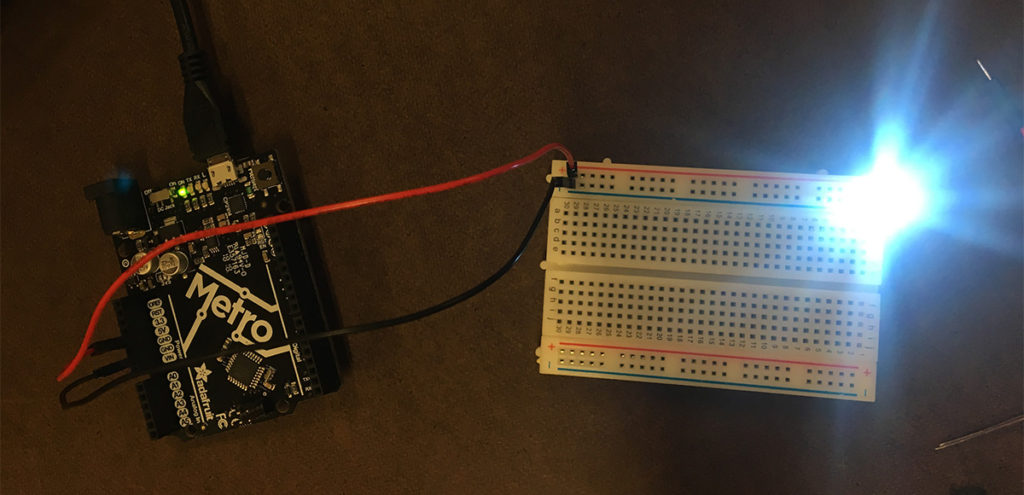
It did work – but I unplugged it immediately knowing it won’t last. Look how overly bright the LED is! The voltage of the electrical current, 5 Volt, was above the maximum voltage of the white LED, about 3 Volt.
Before the LED dies, I added the component making this into a valid harmless circuit: a resistor.

The resistor reduced the current flow, making the circuit more suitable for an LED, ensuring no access energy is wasted into heat damaging our precious white LED.
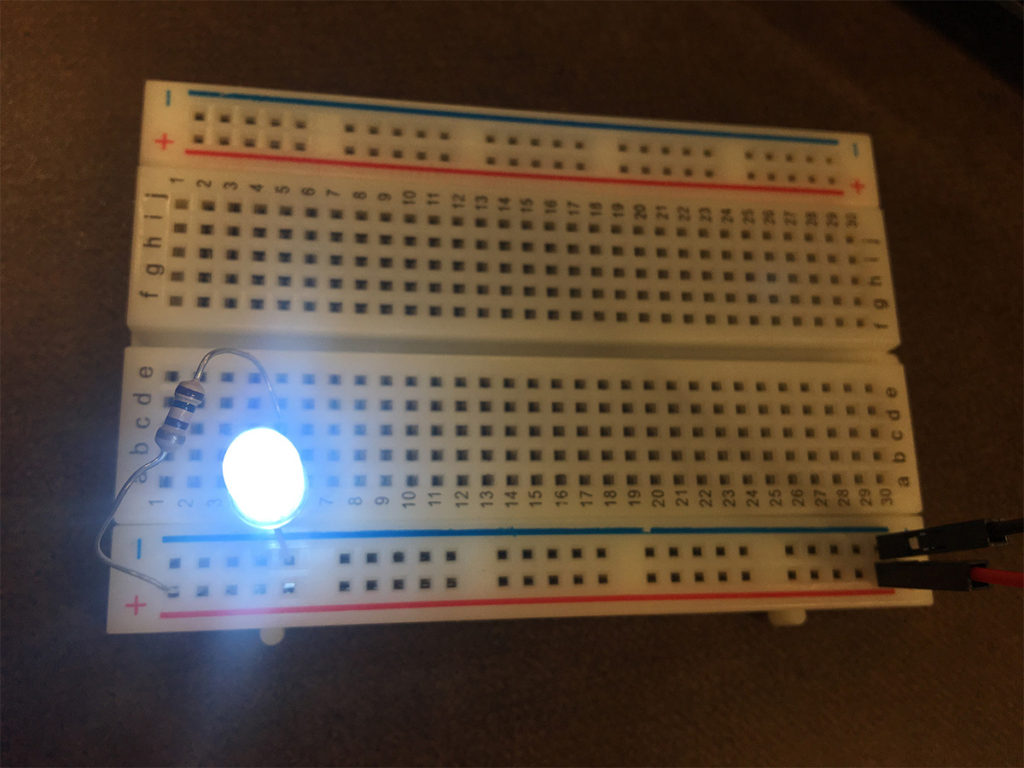
That’s more like it! Being unsure whether I used the correct resistor, I followed the last and most important rule from the class: if unsure, measure.
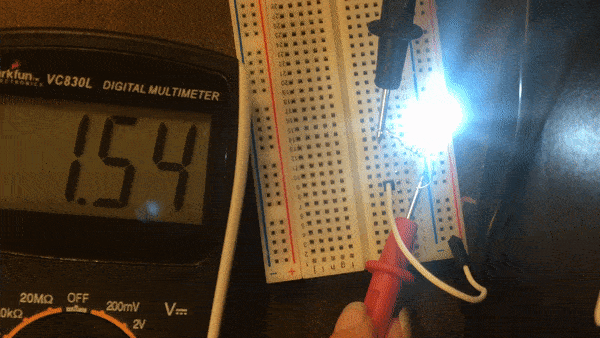
As you can see, the multimeter shows a current of 3.23 Volt going through the LED and a current of about 1.72 Volt going through the resistor.
Giving us a total voltage of 4.95 Volt. Almost 5 Volt, as specified on the microcontroller.
My first switch

Activating the LED by adding a switch to the circuit was a genuinely cheerful moment. This is the first interactive gadget I’ve built at ITP!
LEDs in series
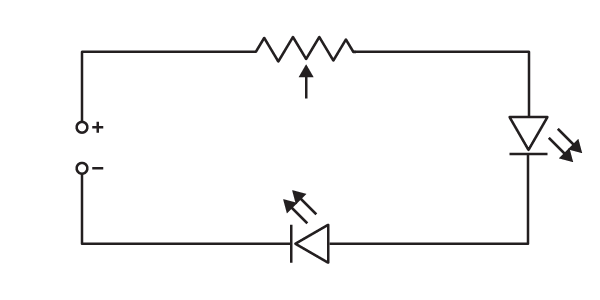
Introducing a potentiometer into the circuit, I explored the features of the series circuit. The familiar resistor wasn’t necessary here.
Two components connected in series are connected along a single path, so the same current flows through all of them.
The Voltage, however, divides between two of them. In this case, the circuit voltage should be ~2.5 maximum at each LED.
Nonetheless, I added a potentiometer which is a variable resistor. See how it effects both LEDs similarly.
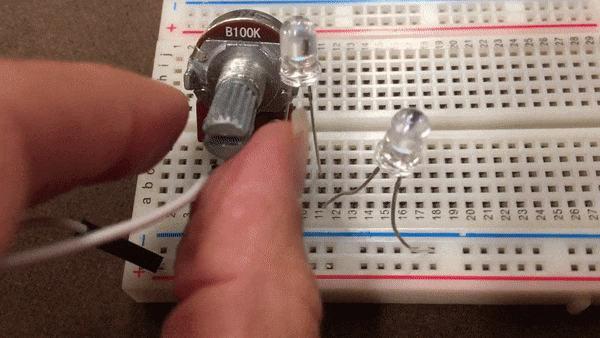
LEDs in parallel
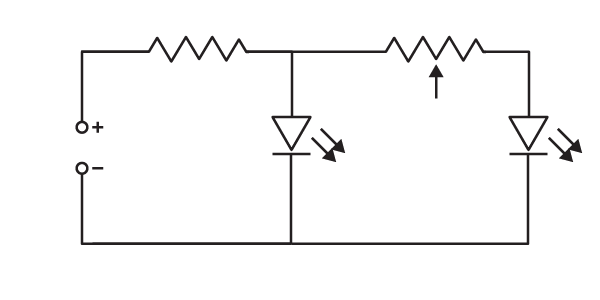
To explore the second type of a circuit, the parallel one, I got a little sophisticated, connecting each LED with a different value resistor.
A parallel circuit divides the electrical current, allowing each component to receive different voltage. Look how it reflects in the brightness of the LEDs!
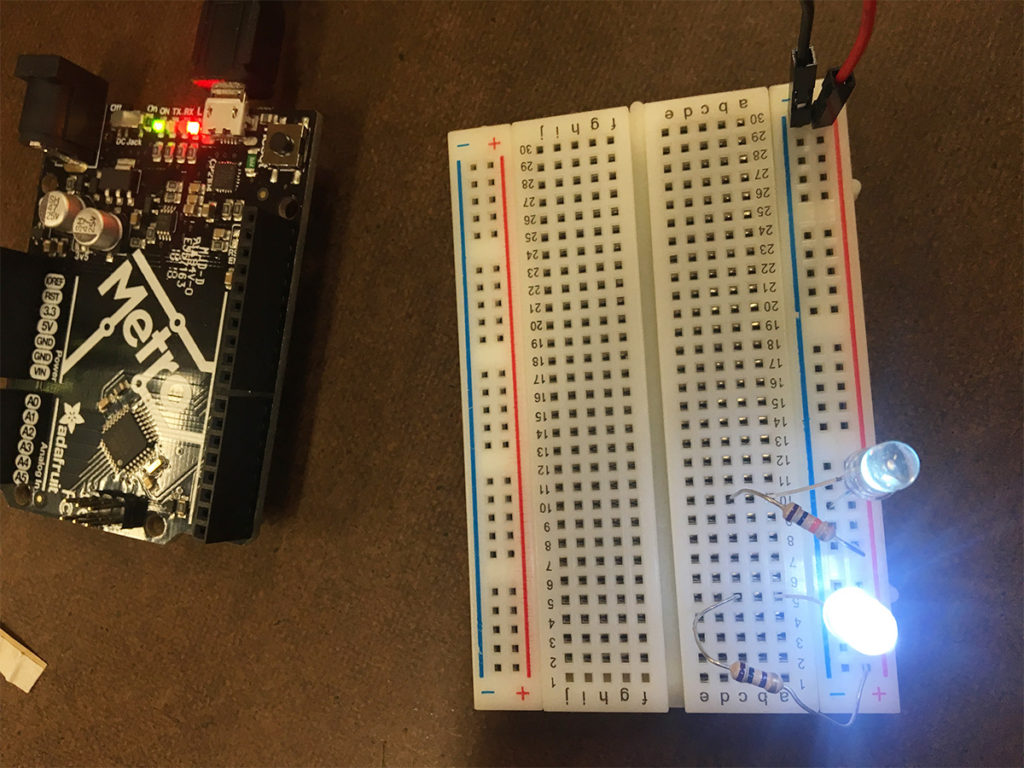
To spice things up even more, I changed one of the resistors to a potentiometer.
We’ve learned that electrical energy runs via the path of least resistance.
And in this example you can see how the electrical energy changes it’s preference from one LED to another, depending on the value of each resistor.
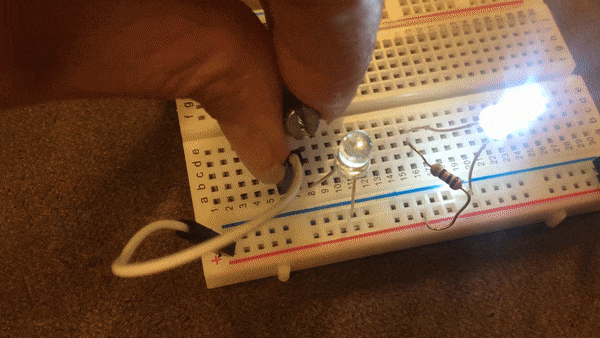
Summary
An afternoon in the workshop have got me familiarized with several types of components.
Microcontrollers, LEDs, switches, and different resistors. I’ve practiced measuring some electrical values with my new multimeter.
And most importantly: I got the laws of electro-physics actualize in front of my eyes into something tangible and pleasurable: shiny blinky LED lights.
After discussing with my classmates, I started pondering: what can be done with this new knowledge?
The most incredible shiny light up shoes, with light patterns reacting to the volume of the music?
Or maybe a light-up gown, serving both as event-photography equipment and a fashion statement?
We shall find out. Maybe by the next lab.

